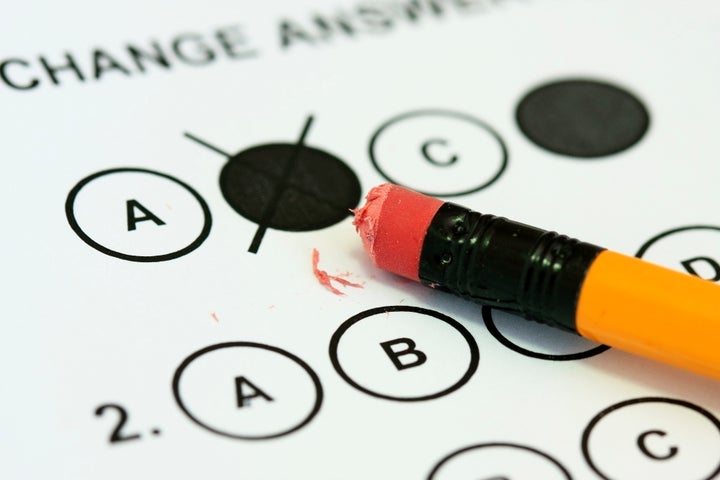
When it comes to literacy in math, science and reading, American teens are far from top performers, according to new results from an international exam released Tuesday.
American teens posted uninspiring results on the 2015 Program for International Student Assessment, a test taken by a sample of 15-year-olds in 70 education systems around the world. Students’ scores in reading and science remained largely stagnant since the last time the test was administered in 2012, but scores in math dropped to lows not seen since 2006. The PISA exam is administered every three years.
The United States posted average scores in reading and science compared to other countries in the Organization for Economic Cooperation and Development, an intergovernmental group of 35 mostly industrialized nations. On math, the United States scored below average, with scores of both top- and low-performing students declining.
When disaggregated by location, the scores of students in Massachusetts, North Carolina and Puerto Rico show sharp divides. Average scores from students in Massachusetts are well above the United States average, while North Carolina scores are consistent with the nation’s overall scores. Puerto Rico’s scores were lower than the U.S. average in all three areas.
Singapore ― while not a member of the OECD ― participated in the exam, and posted top scores in all three subjects. On the other end of the spectrum, the Dominican Republic ― also not an OECD member country ― posted the lowest scores out of any country in science and math.
The United States had an average number of top-performing students in science and reading, but a lower than average number in math. Nine percent of American 15-year-olds received a top score in science, but only 6 percent did the same in math (compared to the OECD average of 11 percent).
Peggy Carr, the acting commissioner of the statistical arm of the U.S. Department of Education, the National Center for Education Statistics, said the declining math scores are “something we should keep an eye on.”
“This pattern we’re seeing in mathematics seems to be kind of consistent with what we’ve seen in previous assessments of mathematics literacy,” said Carr, whose agency released the test scores, on a call with reporters. “Everything was just going down across the entire distribution.”
U.S. Secretary of Education John King Jr. is expected to speak about the results at an event in Massachusetts on Tuesday. While King will express disappointment in the scores, he will praise the New England state as a “bright spot.”
“We’re losing ground ― a troubling prospect when, in today’s knowledge-based economy, the best jobs can go anywhere in the world,” King will say, according to prepared remarks. “Students in Massachusetts, Maryland and Minnesota aren’t just vying for great jobs along with their neighbors or across state lines, they must be competitive with peers in Finland, Germany and Japan.”
Another bright spot, King will note, is that poverty has become less predictive of performance on this exam since 2006.
“The U.S. has made more progress in closing the socioeconomic achievement gap than any other PISA country,” the prepared remarks read.
Randi Weingarten, president of the American Federation of Teachers labor union, connected the stagnating scores to a lack of investment in education.
The scores are “predictable given the impact of the last 15 years of U.S. education policies combined with continuing state disinvestment following the 2008 recession,” Weingarten said in a statement. “Thirty one states still spend less per pupil than before the recession.”
